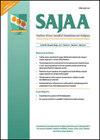The vagus nerve: current concepts in anaesthesia and ICU management
IF 0.3
Q4 ANESTHESIOLOGY
Southern African Journal of Anaesthesia and Analgesia
Pub Date : 2022-10-01
DOI:10.36303/SAJAA.2022.28.5.2811
引用次数: 1
Abstract
The vagus nerve (XN) is a major component of the autonomic nervous system. It plays an important role both in the regulation of metabolic homeostasis and in inflammatory modulation. XN tone is dampened in stress conditions (either of inflammatory and/ or infectious origin) and the preservation of parasympathetic function may serve as a biomarker of general health, longevity and vitality. COVID-19 remains a major healthcare issue worldwide. Excessive inflammation and its end organ consequences are key elements in the pathogenesis of COVID-19-induced multiple organ dysfunction, as well as post-COVID-19 syndrome (long COVID). XN stimulation has been hypothesised to control both the SARS-CoV-2 replication and the ensuing inflammation, and could improve the clinical outcomes as an adjunct treatment. Electrical stimulation of the auricular XN (AXNS) is an emerging technology, with few side effects and anaesthetic implications, and is showing promise with respect to the management of gastroparesis, epilepsy, migraine, autoimmune diseases, anxiety and major depressive disorders, obesity, SARS-CoV-2 infection in the intensive care unit (ICU), and long COVID. Continuous vagal tone monitoring in patients with COVID-19 may potentially also be used as a predictive marker of the COVID-19 illness course, and an evaluation of future therapies. Copyright © 2022 The Author(s).迷走神经:麻醉和ICU管理的最新概念
迷走神经(XN)是自主神经系统的主要组成部分。它在代谢稳态调节和炎症调节中都发挥着重要作用。XN张力在应激条件下(炎症和/或感染源)会减弱,副交感神经功能的保留可能是总体健康、寿命和活力的生物标志。新冠肺炎仍然是世界范围内的一个主要医疗保健问题。过度炎症及其最终器官后果是新冠肺炎诱导的多器官功能障碍以及新冠肺炎后综合征(长期新冠肺炎)发病机制的关键因素。XN刺激被认为可以控制严重急性呼吸系统综合征冠状病毒2型的复制和随后的炎症,并可以作为辅助治疗改善临床结果。电刺激耳廓XN(AXNS)是一项新兴技术,几乎没有副作用和麻醉作用,在治疗胃轻瘫、癫痫、偏头痛、自身免疫性疾病、焦虑和严重抑郁障碍、肥胖、重症监护室感染严重急性呼吸系统综合征冠状病毒2型和长期新冠肺炎方面显示出前景。新冠肺炎患者的持续迷走神经张力监测也可能被用作新冠肺炎病程的预测标志,以及对未来治疗的评估。版权所有©2022作者。
本文章由计算机程序翻译,如有差异,请以英文原文为准。
求助全文
约1分钟内获得全文
求助全文
来源期刊

Southern African Journal of Anaesthesia and Analgesia
ANESTHESIOLOGY-
CiteScore
0.90
自引率
0.00%
发文量
10
 求助内容:
求助内容: 应助结果提醒方式:
应助结果提醒方式:


